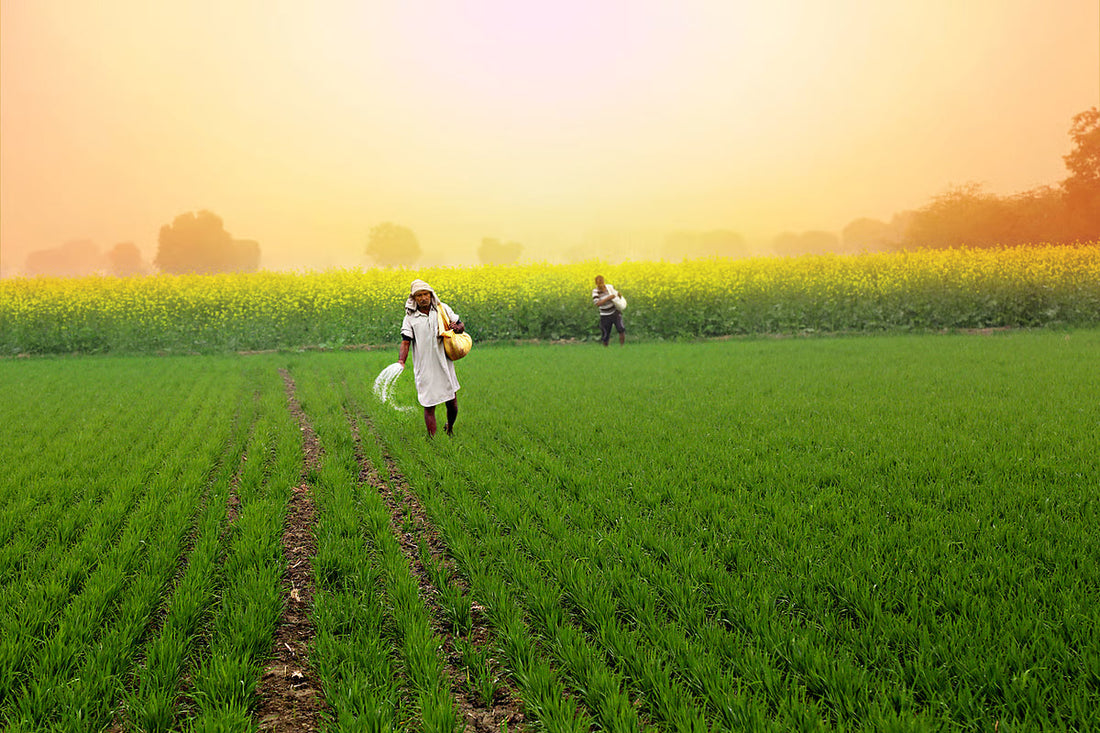Article by :- Saumya Mishra
Introduction
Rabi crops is also known as winter crops, are agricultural crops that are sown in winter and harvested in the spring in India. They are sown after the rains (October–December) and harvested in spring (March–April). Popular vegetables like peas, carrots, cauliflower, spinach, and onions all belong to this season.
For farmers, the right timing is everything. A crop calendar provide clear instructions it tells farmers which crop to grow and when. This helps in using resources wisely, avoiding losses, and getting better harvests.
Month-by-Month Rabi Crop Calendar for winter Vegetables
•October – November: Spinach, coriander, fenugreek, early peas, carrots.
•November – December: Cauliflower, cabbage, mustard, wheat, onion nursery.
•December – January: Radish, potato, late wheat, leafy vegetables.
•January – February: Fast greens like spinach, fenugreek, coriander.
•February – March: Cucurbits (bottle gourd, pumpkin, etc.) and crops that bridge the season into summer.
Following this timeline helps farmers get the best yield while keeping soil and plants healthy.
Soil Preparation and seed selection
Healthy soil gives better harvest. Fields should be loosened soil and enriched with organic matter. Farmers must also check soil pH and nutrients before sowing so they can add what’s missing.
Equally important is good seed quality. Using certified or hybrid seeds ensures better germination, disease resistance, and higher harvest. For example, hybrid peas and cauliflower varieties give better results when sown at the right time.
Irrigation and Nutrient Management
Since Rabi season gets very little rain, watering is critical. Smart methods like furrow irrigation for wheat or drip irrigation for vegetables save water and improve crop health. With NEER Controllers by KrishiVerse, farmers can operate their pumps remotely (2G/4G options), saving water, electricity, and effort while ensuring timely irrigation.
Crops also need balanced nutrition—nitrogen, phosphorus, and potassium must be given at the right stage. Along with chemical fertilizers, adding compost or bio-fertilizers keeps the soil alive and reduces dependency on chemicals.
Pest and Disease management in Rabi crops
Rabi crops face challenges like rust in wheat, aphids in mustard, and leaf spots in vegetables. The best way to fight these is through Integrated Pest Management (IPM) crop rotation, resistant varieties, biological sprays, and regular monitoring. Catching the problem early means less damage and lower pesticide costs.
 Smart Farming Partner for Rabi Season
Smart Farming Partner for Rabi Season
Today’s farmers need modern tools that reduce prediction and make decisions easier. For example, digital soil advisors like Parth AI guide farmers by analyzing soil details and suggesting crops best suited for that land. This saves both time and resources.
Along with this, Parth AI’s KrishiGPT works like a friendly assistant farmers can ask about sowing time, fertilizers, or pest solutions and get instant, practical advice.
With such support, Parth AI becomes more than just a tool it acts as a reliable farming partner, helping farmers plan the Rabi season with confidence and clarity.
Conclusion:
A Smarter Future for Rabi Farming rabi crops play a big role in India’s food supply and farmer income. With the right sowing calendar, healthy soil, smart irrigation, and pest control, farmers can improve both yield and profits.
And with modern support like Parth AI, farming becomes easier, smarter, and more reliable.

